Get the fix for the error 0xc0000034 on Windows XP, Windows Vista, Windows 7, Windows 8 and Windows 10.
Contents
About “0xc0000034“
The following information on this error has been compiled by NeoSmart Technologies, based on the information gathered and reported by our global network of engineers, developers, and technicians or partner organizations.
Description and Symptoms
The error messages, alerts, warnings, and symptoms below are tied to this error.
Symptom 1: “0xc0000034” error screen on startup
On Windows 7 systems, the error is usually displayed with a simpler error text:
!! 0xc0000034 !!
But this type of error screen is also common on Windows Vista and 7 systems:
The text reads:
Windows failed to start. A recent hardware or software change might be the
cause. To fix the problem:
1. Insert your Windows installation disc and restart your computer.
2. Choose your language settings, and then click "Next."
3. Click "Repair your computer."
If you do not have this disc, contact your system administrator or computer
manufacturer for assistance.
File: \Boot\BCD
Status: 0xc0000034
Info: The Windows Boot Configuration Data file does not contain a valid
OS entry.
On Windows 8, Windows 8.1 and Windows 10 systems, the error code text would be this:
Recovery Your PC needs to be repaired The Boot Configuration Data file is missing some required information. File: \BCD Error code: 0xc0000034 You'll need to use the recovery tools on your installation media. If you don't have any installation media (like a disc or USB device), contact your system administrator or PC manufacturer. Press ESC for UEFI Firmware settings.
You can prevent the 0xc0000034 error by installing KB 2533552 update.
Causes of this Error
This error has been known to occur as a result of one of the following causes:
Cause 1: Bootloader files are missing or corrupt
One of the most common causes of this error is the boot-related files that became either missing, corrupt, or misconfigured. That could happen because of disk write errors, power outages, boot sector viruses, or errors made while configuring these files manually.
Fixing “0xc0000034” on Windows
Windows Setup CD/DVD Required!
Some of the solutions below require the use of the Microsoft Windows setup CD or DVD. If your PC did not come with a Windows installation disc or if you no longer have your Windows setup media, you can use Easy Recovery Essentials for Windows instead. EasyRE will automatically find and fix many problems, and can also be used to solve this problem with the directions below.
Fix 0xc0000034 with Easy Recovery Essentials
Easy Recovery Essentials is guaranteed to fix the “0xc0000034” error automatically using its built-in Automated Repair option. EasyRE is currently available for Windows XP, Vista, 7, 8, Windows 10, and Windows 11 and can be downloaded and created on any PC.
- Download Easy Recovery Essentials. Make sure to note your Windows version (XP, Vista, 7, 8, 10, or Windows 11) before you download EasyRE. This guide can help you identify what version of Windows you have installed.
- Burn the image. Follow these instructions on how to burn the bootable ISO image very carefully, as making a bootable CD can be tricky! Alternatively, these instructions explain how to create a bootable EasyRE recovery USB stick/drive.
- Boot up your PC from the Easy Recovery Essentials CD or USB you created.
- Once EasyRE is running, choose the “Automated Repair” option and click Continue.
- After EasyRE scans your computer’s drives, identify and select the drive letter for your Windows installation from the list, and then click on the Automated Repair button to begin.
- Easy Recovery Essentials will start analyzing the selected drive for problems. EasyRE will test for and attempt to automatically correct errors with the disk, partition, bootsector, filesystem, bootloader, and registry. No intervention is required, as EasyRE’s repair is fully automated:
- Once the process is complete, EasyRE will report its findings. Click on the Restart button to reboot your PC and test the changes.
- The “0xc0000034” error should now be fixed as your PC begins to load:

You can download Easy Recovery Essentials from here.
Fix 0xc0000034 in Windows Vista
Fix #1: Is SP1 Installed
If you installed SP1 for Windows 7, follow the instructions from the 0xc0000034 appears after I install Service Pack 1 chapter below.
If you don’t have SP1 installed or haven’t installed it recently, go to Fix #2 below.
Fix #2: Run chkdsk
To run chkdsk on your Windows Vista computer in an attempt to fix this boot error, follow these steps:
- Reboot your computer with the original Windows Vista installation disc and boot from the disc
If you don’t have your original Windows Vista installation disc, go to Fix 0xc0000034 with Easy Recovery Essentials
- Click Repair your computer
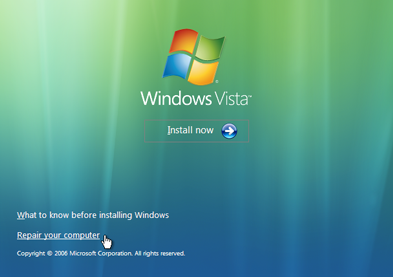
- Click Command Prompt
- Type this command:
chkdsk c: /r
Replace
c:with the letter of the drive where your Windows Vista is installed on.
Press Enter - Restart the computer
Fix #3: Run Startup Repair
Follow the same steps from Fix #2: Run chkdsk until you boot into the Windows Vista installation disc:
- Click Repair your computer

- Click Startup Repair
Fix #4: Restore
If Startup Repair didn’t work to fix the 0xc0000034 error, you can also try to restore your Windows Vista to a date before the boot error appeared.
Follow the same steps from Fix #2: Run chkdsk until you boot into the Windows Vista installation disc:
- Click Repair your computer
- At the System Recovery Options screen, click System Restore
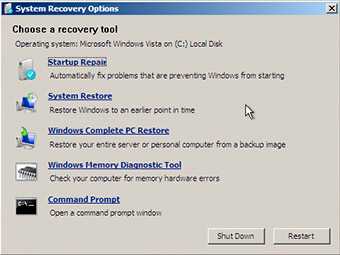
Fix 0xc0000034 in Windows 7
Fix #1: Is SP1 Installed
These steps apply only to Windows 7 systems who recently installed Service Pack 1 (SP1).
If you installed the SP1 for your Windows 7 system, follow the instructions from the 0xc0000034 appears after I install Service Pack 1 chapter below.
If you don’t have SP1 installed or haven’t installed it recently, go to Fix #2 below.
Fix #2: Run bootrec
You can run the bootrec utility to rebuild the BCD:
- Boot from the Windows 7 DVD
- Click Repair your computer or press R
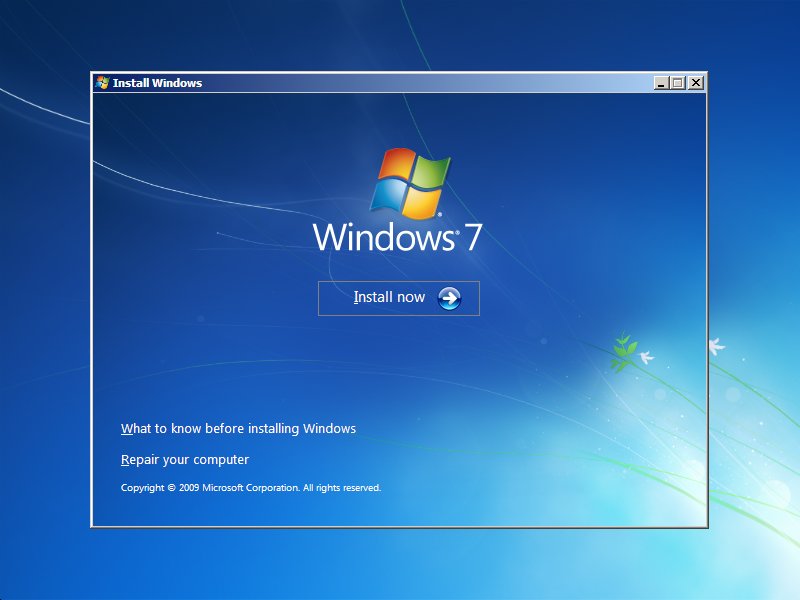
- At the System Recovery Options window, click Command Prompt
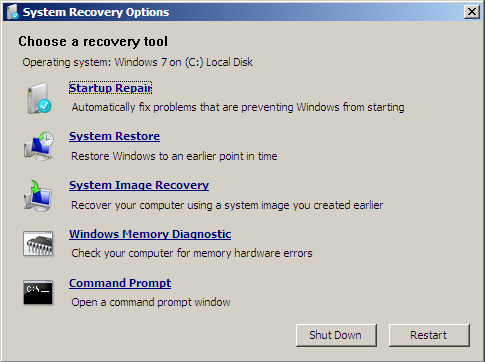
- When Command Prompt loads, type this command:
bootrec /rebuildbcd
- Press Enter
Most Windows 7 systems have the System Recovery Options installed which can be accessed without the installation DVD:
- Restart the computer
- Press F8. You need to press the F8 key before the Windows 7 logo appears
- Select Repair Your Computer
- Press Enter
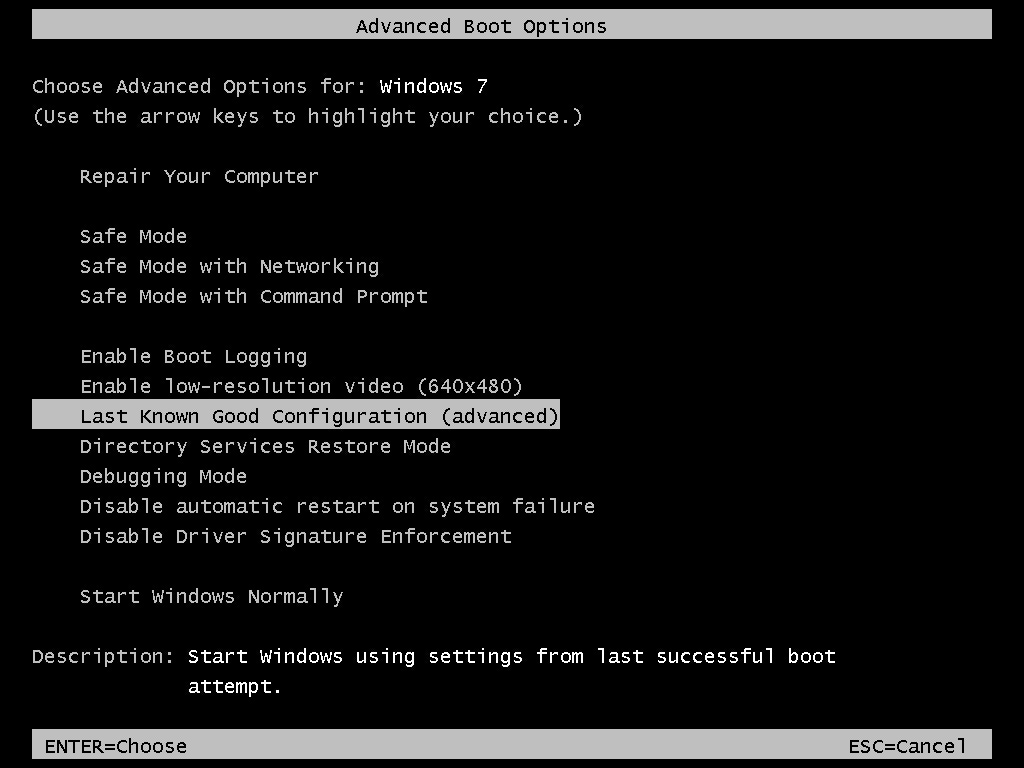
Fix #3: Startup Repair
If bootrec doesn’t work, you can try to run the Startup Repair utility:
- Boot from the installation disc (CD or DVD) and click Repair your computer or press R

- System Recovery Options should now be available

- Click Startup Repair
Fix 0xc0000034 in Windows 8
Fix #1: Run Automatic Repair
Windows 8/8.1 comes buit-in with the Automatic Repair that will attempt to find and fix various errors that prevents your computer to load. On Windows Vista and 7 it was called Startup Repair.
To run Automatic Repair, follow these steps:
- Insert the Windows 8 or Windows 8.1 DVD/USB and reboot your system
If you don’t have your original Windows 8 installation media, go to Fix 0xc0000034 with Easy Recovery Essentials
- Boot from the media
- Click Repair your computer at the Install now screen
- Select Troubleshoot
- Select Automatic Repair
- Follow the wizard instructions to complete the process
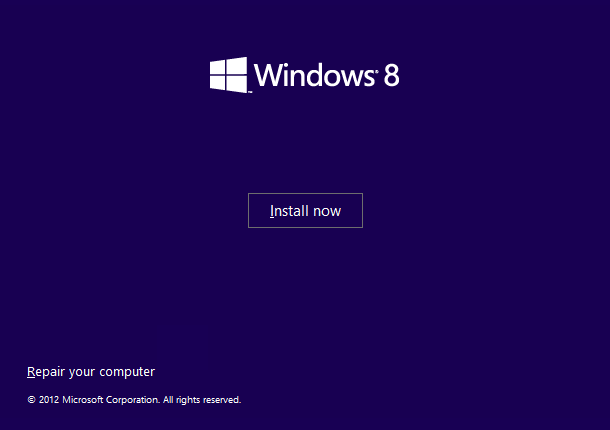
Fix #2: Run bootrec
If Automatic Repair didn’t fixed the 0xc0000034 error, try running bootrec to rebuild the BCD:
You need to have the original Windows 8/8.1 install media. If you don’t have it, go to Fix 0xc0000034 Easy Recovery Essentials
- Restart your computer and boot from the DVD/USB
- Click Repair your computer
- Select Troubleshoot and then select Command Prompt
- Type these commands in Command Prompt:
bootrec /FixMbr bootrec /FixBoot bootrec /ScanOs bootrec /RebuildBcd
- Once the last bootrec finished, type:
exit
- Press Enter
- Restart your computer
Fix #3: Refresh
Performing a refresh of your Windows 8 or Windows 8.1 would not affect your personal files. To run the refresh operating, follow these steps:
- Restart your computer
- Press the F8 key or the F11 key
- Click Troubleshoot
- Click Refresh your PC
- Follow the instructions to complete the process
Fix 0xc0000034 in Windows 10
Fix #1: Run Automatic Repair
Windows 10 comes buit-in with the Automatic Repair that will attempt to find and fix various errors that prevents your computer to load.
To run Automatic Repair, follow these steps:
- Insert the Windows 10 DVD/USB and reboot your system
If you don’t have your original Windows 10 installation media, go to Fix 0xc0000034 with Easy Recovery Essentials
- Boot from the media
- Click Repair your computer at the Install now screen
- Select Troubleshoot
- Select Automatic Repair
- Follow the wizard instructions to complete the process
Fix #2: Run bootrec
If Automatic Repair didn’t fixed the 0xc0000034 error, try running bootrec to rebuild the BCD:
You need to have the original Windows 10 install media. If you don’t have it, go to Fix 0xc0000034 Easy Recovery Essentials
- Restart your computer and boot from the DVD/USB
- Click Repair your computer
- Select Troubleshoot and then select Command Prompt
- Type these commands in Command Prompt:
bootrec /FixMbr bootrec /FixBoot bootrec /ScanOs bootrec /RebuildBcd
- Once the last bootrec finished, type:
exit
- Press Enter
- Restart your computer
Fix #3: Refresh
Performing a refresh of your Windows 10 would not affect your personal files. To run the refresh operating, follow these steps:
- Restart your computer
- Press the F8 key or the F11 key
- Click Troubleshoot
- Click Refresh your PC
- Follow the instructions to complete the process
Troubleshooting
0xc0000034 appears after I install Service Pack 1
The 0xc0000034 error code can appear on Windows 7 or Server 2008 systems as a black screen error after installing Service Pack (SP1).
The usually error text is:
!! 0xc0000034 !! 142/53007 (_0000000000000000.cdf-ms)
Depending if you can boot into Windows, you have the following options available:
- Restart the computer using the original installation disc
- Run a VBS script from Command Prompt using the original installation disc
- Install the KB 2533552 update
- Reinstall the Windows Service Pack
If you can boot into Windows and the 0xc0000034 error isn’t preventing you from using your computer:
- Install KB 2533552
- Reinstall SP1
If you can’t boot into Windows, follow these 2 fixes:
Fix #1: Restore your computer
- Restart your computer and press the F8 key to boot into the Advanced Boot Options
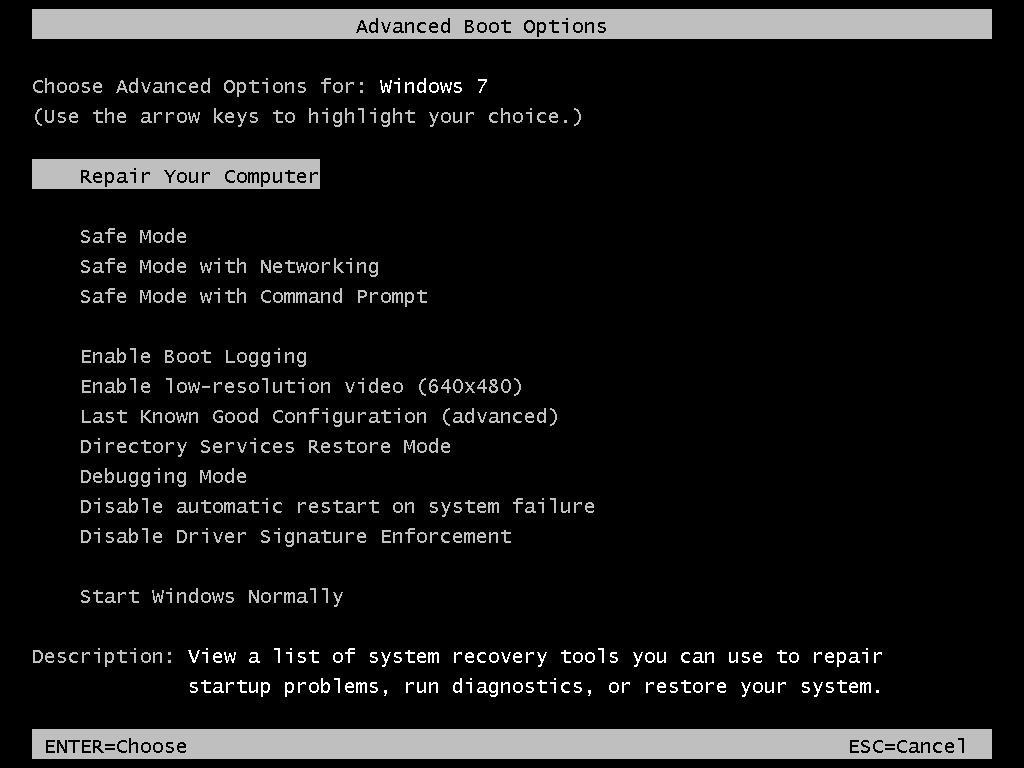
- Select Repair your computer
- Press Enter
- Select a language, keyboard and click Next
- Enter the Administrator password
- Click OK
- At the System Recovery Options screen, select System Restore
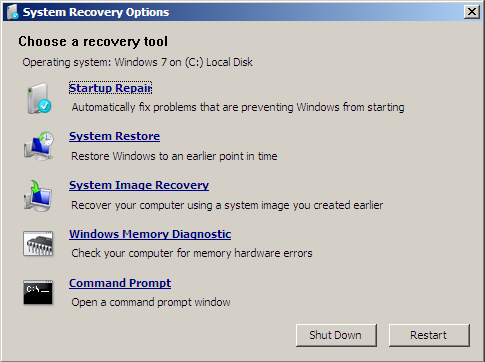
- Click Next
- Browse the available restore points and select the restore point titled as Windows 7 Service Pack 1.If there is no such restore point, select a restore point dated before the date when you installed Service Pack 1.
- Click Next
- Click Finish at the Confirm your restore point screen
- Click Yes
- Click Restart to restart the computer
Fix #2: Run a VBS script
This method is recommended for advanced users. Go to Fix 0xc0000034 with Easy Recovery Essentials for a quick and easy way to fix this error.
- Save the following text as
Script.vbson a USB flash drive:Dim xmlDoc, node, nodeList, fileName, backupFileName, numberOfPOQNodes Set xmlDoc = CreateObject("Microsoft.XMLDOM") If Wscript.Arguments.Count = 0 Then WScript.echo("Error! No XML file specified.") Wscript.quit End If fileName = WScript.Arguments(0) backupFileName = Left(fileName, InStrRev(fileName, ".") - 1) & "_backup.xml" If Not xmlDoc.load(fileName) Then WScript.echo("Failure loading XML file " & fileName & ".") Wscript.quit End If xmlDoc.save(backupFileName) Set nodeList = xmlDoc.documentElement.selectNodes("POQ") numberOfPOQNodes = nodeList.Length For Each node in nodeList xmlDoc.documentElement.removeChild(node) Next xmlDoc.save(fileName) Set xmlDoc = Nothing WScript.echo(numberOfPOQNodes & " POQ nodes removed. Script completed.") - Restart the computer
- Press F8
- Boot into the Advanced Boot Options menu and select Repair your computer
- Press Enter
- Select a language and keyboard and enter the Administrator password, if prompted
- Insert the USB flash drive with the
Script.vsfile - Select Command Prompt, at the System Recovery Options screen

- Navigate to the USB flash drive by typing the letter of the drive:
F:
F:is the USB flash drive - Then type this command:
Cscript Script.vbs C:\Windows\winsxs\pending.xml
Replace
C:with the letter of the drive where your Windows 7 is installed. - Press Enter
- You should see a confirmation message:
2 POQ nodes removed. Script Completed
- Type
exit - Press Enter
- Restart your computer
More Information
Linked Entries
Support Links
- Easy Recovery Essentials for Windows – our repair and recovery disk.
It’s an easy-to-use and automated diagnostics disk. It’s available for Windows 8, Windows 7 and Windows Vista. It’s also available for Windows XP and Windows Server.Read more at Windows Recovery Disks.
- The NeoSmart Support Forums, member-to-member technical support and troubleshooting.
- Get a discounted price on replacement setup and installation discs: Windows Vista, Windows 7, Windows 8, Windows 10.
Applicable Systems
This Windows-related knowledgebase article applies to the following operating systems:
- Windows Vista (all editions)
- Windows 7 (all editions)
- Windows 8 (all editions)
- Windows 8.1 (all editions)
- Windows 10 (all editions)








